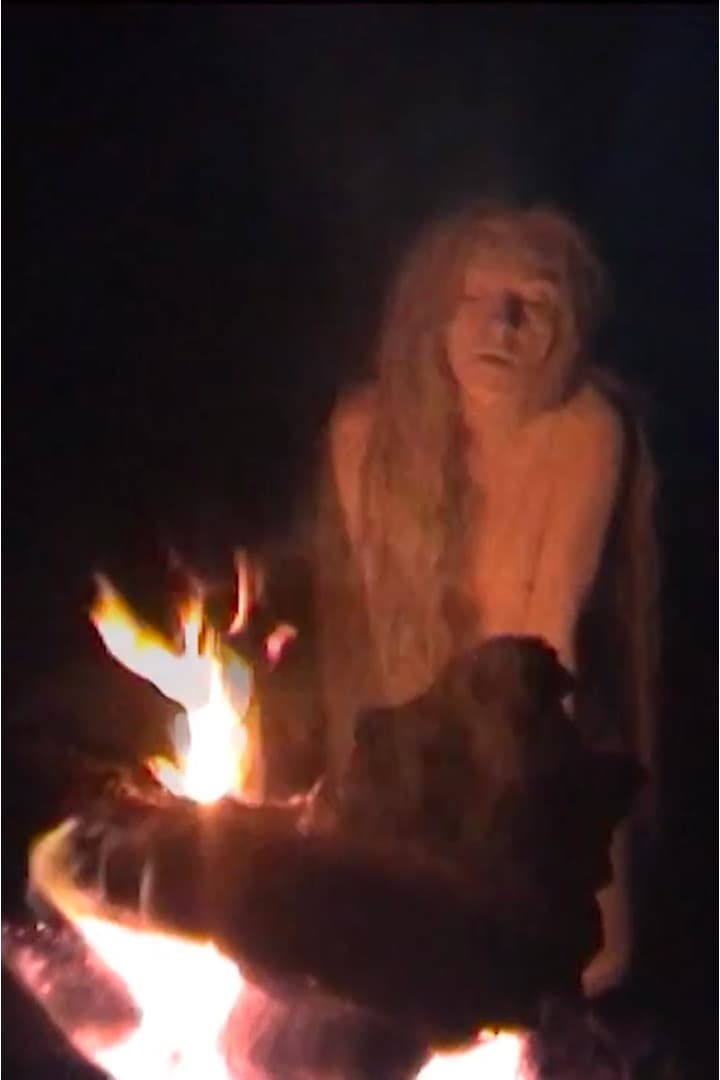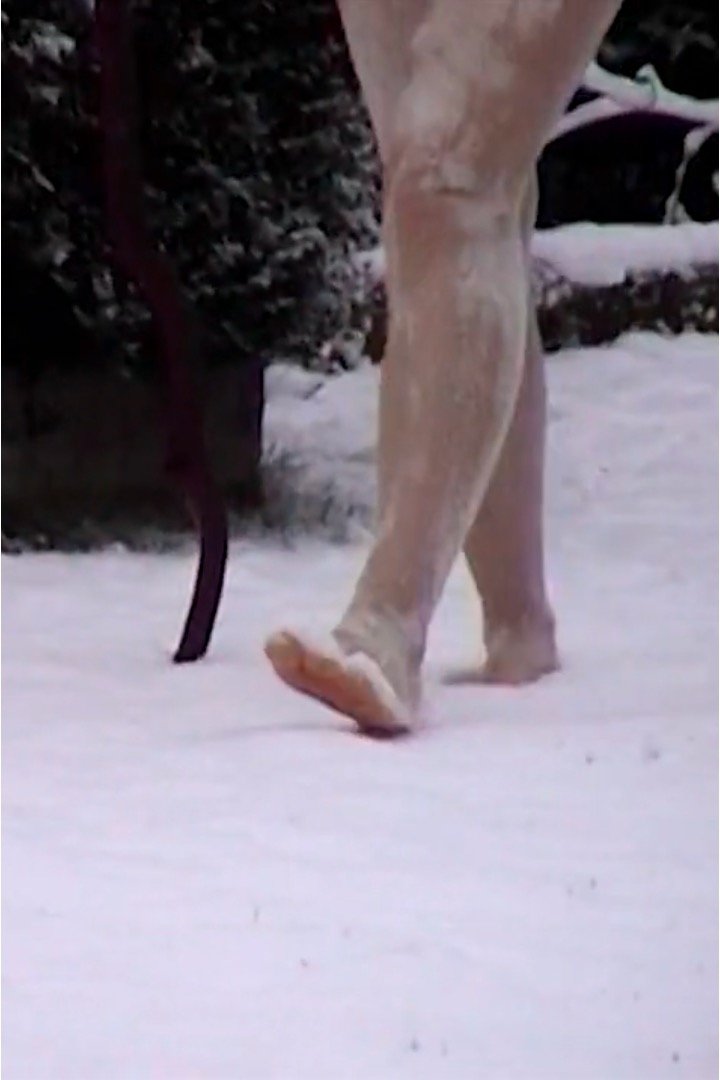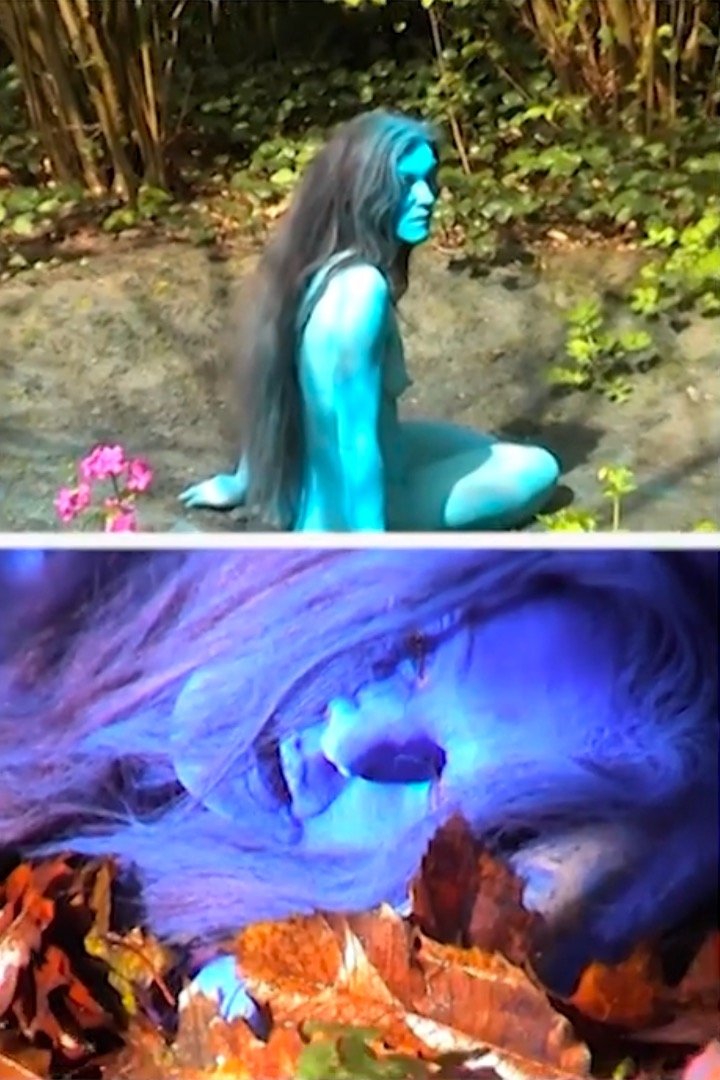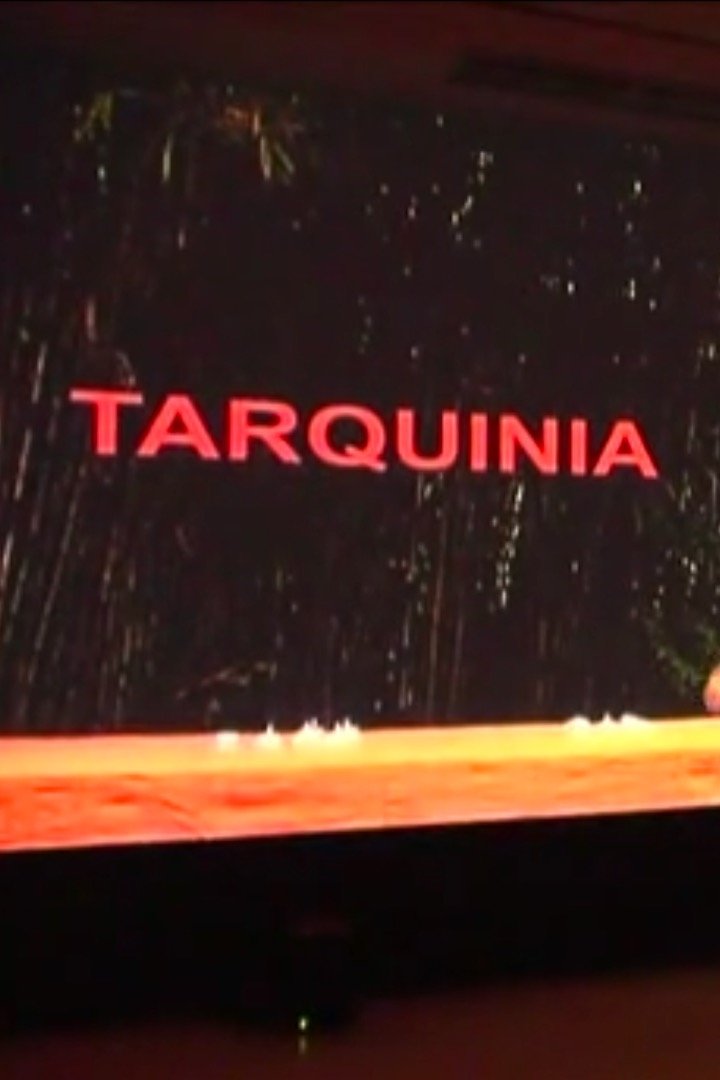

Video performance, 2003. At nightfall, the fire smoulders, the artist stirs it up. It begins to sputter and spark, waking up petrified life. The sounds of the day quiet down, songbirds, the ice-cream cart, peacocks, a barking dog… Only the woman keeps on humming after the silence of the night has fallen.

Video performance, 2001. Video installation at CC Strombeek in X, Highway to reflection, 2011, curated by Luc Binst and Luk Lambrecht.

Video performance through 4 seasons, 2005. The artist infiltrates nature four times. Nature flews through her veins and nestles under her skin. The color on her skin evolves with the 4 seasons we have in Belgium: winter, spring, summer, autumn. The blue hue that predominates in the sky at that particular moment in the circle of the year is condensed on the artist's skin. Marie Julia Bollansée uses 4 blue pigments: cobalt in winter, ceruleum in spring, indigo in summer and ultramarine in autumn. The Impressionists studied the same setting in different lights or different seasons. They looked at it with their eyes and painted it. Marie Julia Bollansee goes into nature, into the same small biotope several times of the year-circle. And she becomes nature for a while.

Video installation, 2006, at M HKA Antwerpen 2007 “Lonely at the Top”, curators Dieter Roestraete & Grant Watson. The title of Marie Julia Bollansée’s work refers to an old Etruscan city near Rome. Tarquinia was the most important of the twelve cities of the Etruscan League and is now an archaeological site primarily known for its necropolis – an underground cemetery containing more than six thousand tombs, many of which are decorated with splendid colourful murals. However, of this partially macabre history hardly a trace can be found in Bollansée’s “Tarquinia”, a three-part projection in which a festively laid table with an ever changing line-up of guests is the central point – a picture which is loosely based on Tarquinia’s ancient wall paintings. Although associations with the iconographic tradition of the Last Supper are brought to mind, “Tarquinia” definitely plays on a different emotional register – that of a festive beginning rather than that of a majestic fatal ending.

Performance, 23 September 2005, at Zoersel, Seppenshuis. Avens are relics from prehistoric times (3000 BC). They are natural cavities in the limestone soil that have been washed out by water. The early inhabitants used those cavities as a quarry from which they extracted the clay for their pottery. When the clay ran out or had become too difficult to reach these caverns were used as depositories for food. Usually an AVEN was connected to an underground vein of water. I saw AVENS like this in Cambous, Languedoc. They date from 3000 BC. "I think they’re wonderful. Time and time again it surprises me that as soon as I perform a work existing in my head, it begins to lead a life of its own. During the try-out I discovered that an AVEN could also be the crater of a blue meteor fallen from Sirius into our garden or just as likely a hole in the ground caused by the impact of a poisonous gas bomb."
Performance, 2002, in SISTERS BEGUINE, a group exhibition under the curatorship of Peter Morrens and Rik de Boe, the Voorkamer Gallery, Lier(B). In the transparent house she turns blue and hums a monotonous melody. The reading of Hadewijch's visions, who is said to have been a beguine or at least a religiously independent woman, was one of the reasons for the performance that explores the field of tension between physical consciousness and spiritual sensibility.

Performance, 1999, at NICC Antwerp, 9 September 1999, in ILLUSION FREE SPACE FOREVER YOUNG, curated by Gert Robijns & Francesca Lesac. The BODI are a nomad tribe long since living in the Omo-valley in the south of Ethiopia.
By browsing this website, you accept our cookies policy.